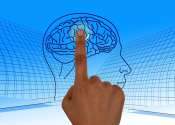Brain computer interface turns mental handwriting into text on screen
Scientists are exploring a number of ways for people with disabilities to communicate with their thoughts. The newest and fastest turns back to a vintage means for expressing oneself: handwriting.
May 12, 2021
0
364









